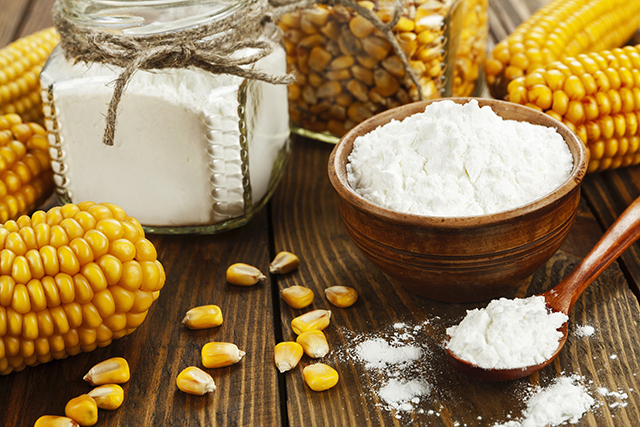Go fig-ure: 7 types of figs to add to your garden and how to grow them
08/04/2018 / By Ralph Flores

Our relationship with the fig tree is one for the books: It’s one of the first crops that we’ve learned to cultivate (predating even wheat), and we’ve been enjoying its sweet, juicy fruit ever since.
Of course, the fact that figs are ridiculously easy to propagate could be a significant factor in why our ancestors decided to start domesticating them. In his video, Andrew from Philosopher’s Garden shows just how simple it is to grow figs in your own garden, as well as some varieties to get you started.
Watch the full episode from Brighteon.com here:
Get acquainted with common fig varieties
The common fig tree (Ficus carica L.) has well over 700 named varieties. However, not all of these can be used in most home gardens. For the most part, all varieties of the fig tree are categorized into four types:
- Caprifigs – These only produce male flowers and never bear fruit.
- Smyrna – It only bears female fruit and needs to be pollinated by a caprifig.
- San Pedro – This type has both flowers that need pollination and ones that don’t need it.
- Common figs – Also referred to as common garden figs, these do not need another tree for pollination and are commonly grown in home landscapes.
In the video, Andrew gives us a tour of some of the varieties of fig trees found in his garden. These include:
- Kadota – The fruits of this variety have light green to yellow skin, and these ripen best in full sun and hot temperatures. The figs, when eaten fresh, are described as very sweet, making it a popular choice for canned figs.
- Marseilles – These are large yellow figs that have a delicately sweet flavor. The tree is hardy in Zones 6-9, where it usually ripens at the end of July. In the U.S., no less than Thomas Jefferson helped influence the cultivation of this fruit.
- Grosse de Monstrueuse de Lipari – The plant is named after an island in Italy. The fruits, which are noted to be delicious, have striped green or purplish skin with a red, pink and white flesh.
- Black Madeira – The fruits possess a characteristically intense berry flavor. Most farmers wait for the fruits to ripen to a dead ripe stage when the figs are sweetest. In some areas, this cultivar is also called the Fio Prieto.
- I-258 – Short for Italian 258, the fruits of this cultivar have purple and green skin with a deep red interior. The fruit is juicy and has notes of citrus, tangerine, and passion fruit.
- Genovese – In the video, Andrew doesn’t say which Genovese cultivar he has; however, both variants of Genovese figs are high quality and have superior taste. The difference between the two is the skin color: Genovese Nero is purple, while Genovese Bianco has a yellowish hue.
- Maltese Beauty – This fig variety has a deep amber flesh and a purple or black skin. If the ripening process is extended, the fig becomes thick, with a saccharine taste.
The basics on growing figs
Whether you’re a seasoned gardener or just starting to build your organic garden, figs are undoubtedly one of the best crops to plant. For one, it doesn’t take much to grow figs, and it’s resistant to a lot of pests and diseases. Here are some considerations before you start growing figs. (h/t to TheSpruce.com)
- Figs need at least eight hours of sunlight and shelter to protect them from the elements.
- If you’re living in Zone 6 and higher, you can directly plant the figs in the ground and get a good yield. If you live in Zone 5 and below, it’s better to grow them in a container to protect them during the winter. (Check what hardiness zone you fall into with this guide from the PlantHardiness.ARS.USDA.gov website.)
- Plant figs at least two inches lower than they were growing in their nursery pot. This protects the shallow root from damage caused by extreme temperature and drought.
- Every spring (except for the time that you planted it), topdress your fig tree with no more than two inches of compost.
- Fig trees are low-maintenance, but it’s still important to ensure they get enough water.
- For the most part, figs are mostly resistant to disease and pests. However, have your ground tested for rootknot nematodes before planting, as the worms can attack the roots and prevent proper nutrient intake. (Related: Edible Landscaping Ideas For Small Spaces.)
- Figs are ready for harvest if the fruit starts to droop and the neck area (which connects it to the tree) has shriveled. Protect your hands during harvest, as these can irritate some skin types.
This feature, which discusses how to grow your own figs, can be viewed at this link.
Read more tips to kickstart your home garden by following Homesteading.news today.
Sources include:
Tagged Under: clean food, fig trees, figs, food supply, fresh food, fruits, gardening, gardening tips, green living, home garden, home gardening, Homestead, homesteading, how-to, organics, sustainable living



















